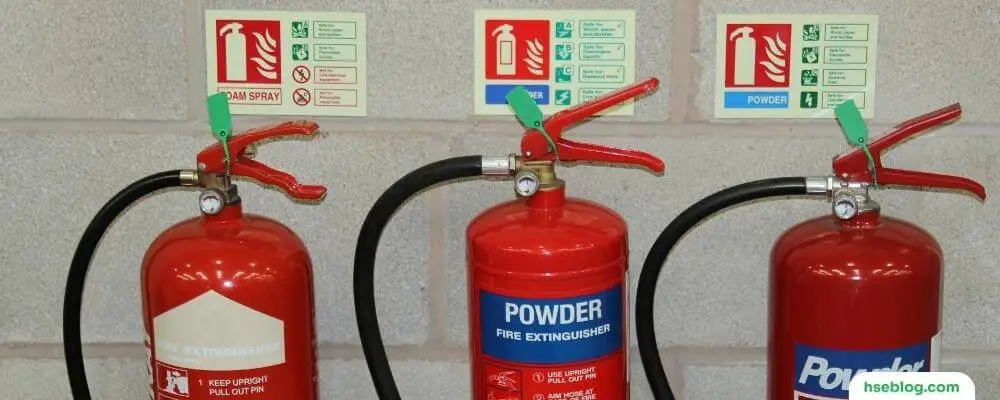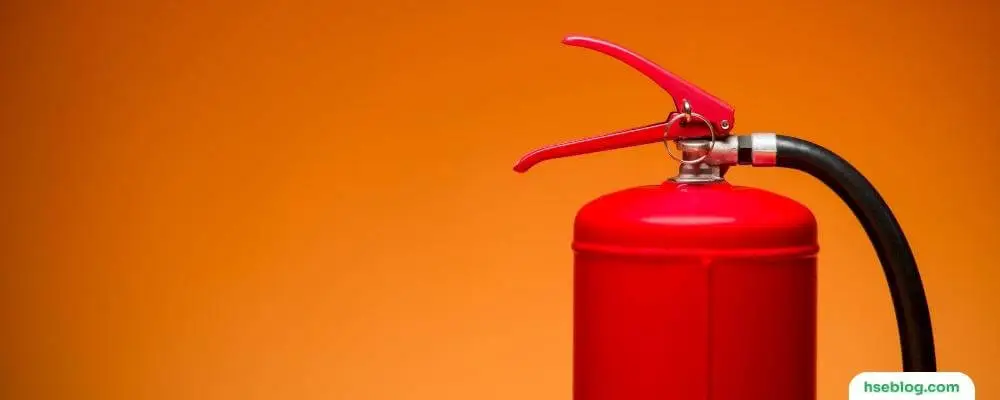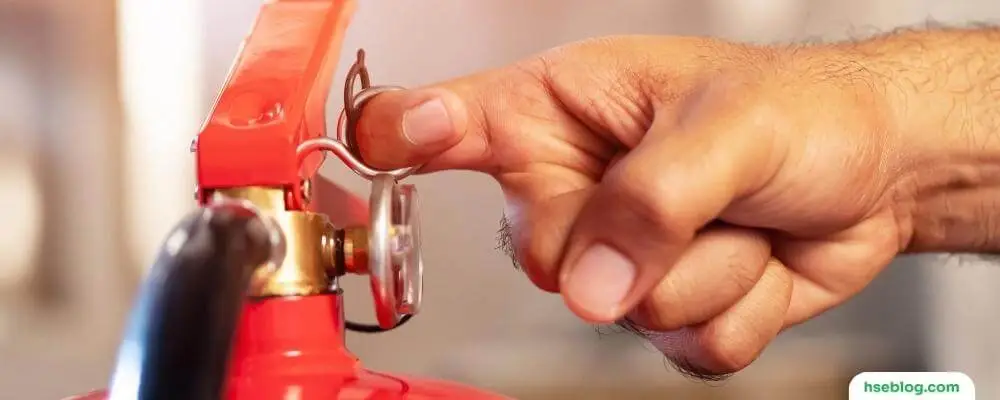Fire extinguishers are essential for maintaining safety in our homes, offices, and public spaces. They provide us the means to respond quickly and effectively in a fire, potentially saving lives and property. However, many people still make mistakes when using fire extinguishers, leading to unnecessary complications, injuries, or even a worsened fire situation.
This blog will discuss some of the most common mistakes people make with fire extinguishers and provide practical tips and guidance to ensure you use them correctly and effectively. By familiarizing yourself with these mistakes, you can be better prepared in an emergency and feel more confident in protecting yourself and others from fire dangers.
Common Mistakes People Make With Fire Extinguishers
Fire extinguishers are important tools for controlling small fires and preventing them from spreading. However, people often make mistakes when using fire extinguishers that can be dangerous and ineffective. Here are some common mistakes people make with fire extinguishers:
1. Using The Wrong Type Of Extinguisher
Using the wrong type of extinguisher is a significant mistake people make when fighting a fire. Fire extinguishers are designed to put out specific types of fires, and using the wrong one can make the situation worse or even more dangerous.
There are five classes of fires, and each requires a different type of extinguisher:
- Class A fires involve ordinary combustibles such as wood, paper, or cloth. A water or foam extinguisher is typically used for these types of fires.
- Class B fires involve flammable liquids such as gasoline or oil. A carbon dioxide (CO2) or dry chemical extinguisher is typically used for these fires.
- Class C fires involve electrical equipment such as computers or appliances. A carbon dioxide (CO2) or dry chemical extinguisher is typically used for these types of fires, as they are non-conductive and will not return electricity to the user.
- Class D fires involve flammable metals such as magnesium or titanium. Specialized extinguishers are required for these types of fires and should only be used by trained professionals.
- Class K fires involve cooking oils and grease. Wet chemical extinguishers are typically used for these types of fires.
Using the wrong type of extinguisher can make the fire worse, as some extinguishers can spread the flames while others may not extinguish them at all. It can also be dangerous, as some extinguishers may react with the fuel source and cause an explosion.

2. Ignoring Regular Maintenance And Inspections
Ignoring regular maintenance and inspections of fire extinguishers is a significant mistake people make regarding fire safety. Fire extinguishers require routine inspections and maintenance to ensure they are functional and effective in a fire emergency.
During inspections, the extinguisher should be checked for visible signs of damage, such as dents, rust, or leaks. The pressure gauge should be checked to ensure it’s in the green or full zone, indicating that the extinguisher is properly charged. The extinguisher must be recharged or replaced if the pressure gauge is not in the green zone. The inspection should also ensure that the tamper seal is intact and that the pull pin and nozzle are not obstructed.
Additionally, fire extinguishers require maintenance services by a qualified technician at least once a year, per local guidelines. During the maintenance service, the technician will check and replace any damaged or expired parts, recharge the extinguisher if needed, and ensure that the extinguisher is in good working condition.
Neglecting regular maintenance and inspections can result in non-functional extinguishers during an emergency, putting people’s lives and property at risk. Inadequate maintenance may lead to the extinguisher failing to discharge or discharging improperly, rendering it ineffective. Therefore, it’s essential to ensure that fire extinguishers are inspected regularly, maintained adequately, and kept in good working condition to provide the required level of protection in a fire emergency.
3. Inadequate Knowledge Of Operation
Inadequate knowledge of how to use a fire extinguisher is another common mistake people make regarding fire safety. Many people assume they know how to use a fire extinguisher. Still, they may not understand the proper technique, which can lead to ineffective fire suppression and potential danger.
To use a fire extinguisher effectively, it’s crucial to understand the PASS method:
- Pull the pin: The first step is to pull the pin at the top of the extinguisher to break the tamper seal.
- Aim at the base of the fire: Aim the extinguisher’s nozzle at the base of the fire, not the flames. This is where the fuel source is located, and by targeting it, you can cut off the supply of oxygen, which will help extinguish the fire.
- Squeeze the handle: Squeeze the handle to release the extinguishing agent from the nozzle.
- Sweep from side to side: Sweep the nozzle from side to side, covering the fuel source entirely. Keep a safe distance from the fire and continue sweeping until the fire is fully extinguished.
Familiarizing yourself with the PASS method and practicing using a fire extinguisher will help you better prepare for a fire emergency. Always evacuate the building and call the fire department if the fire is too large or if you are unsure how to use the extinguisher effectively.

4. Not Checking The Pressure Gauge
Not checking the pressure gauge on a fire extinguisher is another common mistake. The pressure gauge is a critical component of the fire extinguisher, indicating whether it is properly charged and ready for use in a fire emergency.
The pressure gauge is usually located at the top of the extinguisher and has a needle that should be in the green or full zone, indicating that the extinguisher is properly charged. The extinguisher must be recharged or replaced if the needle is in the red or empty zone.
Failing to check the pressure gauge regularly can lead to using an undercharged or overcharged extinguisher, which may not work effectively in a fire emergency. An undercharged extinguisher may not discharge enough extinguishing agents to put out the fire, while an overcharged extinguisher may discharge too much and cause damage to property or people.
5. Waiting Too Long To Use The Extinguisher
Waiting too long to use a fire extinguisher is another common mistake. When a fire starts, act quickly and use the extinguisher as soon as possible while the fire is still small and manageable. Waiting too long to use the extinguisher can allow the fire to grow and become too large to handle, making it more dangerous to use effectively.
Therefore, it’s crucial to use the extinguisher as soon as the fire starts, provided it’s safe. Before using the extinguisher, ensure the fire is still small and contained. If the fire has already grown too large, or if you’re unsure how to use the extinguisher, it’s best to evacuate the building immediately and call the fire department. Fighting a fire that has grown too large can be dangerous and put you and others in harm’s way.
It’s also important to remember that a fire extinguisher is temporary and may not completely extinguish the fire. Even after using the extinguisher, monitor the fire and be prepared to evacuate if it starts to grow again. If the fire cannot be fully extinguished, evacuate the building immediately and call the fire department.
6. Standing Too Close To The Fire
Another common mistake is standing too close to the fire when using a fire extinguisher. Maintaining a safe distance from the fire is essential when using the extinguisher to avoid exposure to heat, smoke, and toxic fumes.
When using a fire extinguisher, stand safely from the fire, ideally between 6 to 8 feet away. This will help protect you from the heat and smoke produced by the fire, which can cause burns, respiratory problems, and other health issues. It’s also important to position yourself upwind of the fire to avoid inhaling toxic fumes.
Standing too close to the fire can also increase the risk of the extinguisher malfunctioning. The heat can cause the extinguishing agent to become ineffective or even damage the extinguisher. Therefore, it’s crucial to maintain a safe distance when using a fire extinguisher to ensure your safety and maximize its effectiveness of the extinguisher.

7. Not Fully Discharging The Extinguisher
Not fully discharging the extinguisher is another common mistake people make when using a fire extinguisher. When fighting a fire, it’s crucial to completely discharge the extinguisher to ensure it is thoroughly extinguished. Failing to do so may result in the fire reigniting, causing further damage and potentially putting people’s lives at risk.
When using a fire extinguisher, make sure to discharge the extinguisher completely, even if the flames are no longer visible. Spraying the extinguishing agent over the fuel source until the fire is fully extinguished. Keep a safe distance from the fire and avoid spraying the agent too close to the flames, as this can spread the fire or cause it to reignite.
It’s also essential to check the pressure gauge after using the extinguisher to ensure it still has enough pressure to function properly in another fire emergency. If the pressure gauge indicates the extinguisher is no longer fully charged, it should be recharged or replaced immediately.
8. Not Having A Fire Extinguisher At All
Not having a fire extinguisher is one of the most significant mistakes people make regarding fire safety. A readily available fire extinguisher can prevent a small fire from becoming a major incident that can risk people’s lives and property.
Every building, whether home or workplace, should have at least one fire extinguisher that is readily accessible and properly maintained. The number of fire extinguishers required will depend on the size of the building and the level of risk associated with the activities performed in the building.
Ensuring the fire extinguishers are properly inspected and maintained to work effectively in a fire emergency is also important. Neglecting regular maintenance and inspections can result in non-functional extinguishers, which can risk people’s lives and property.

9. Removing The Nameplate
Removing the nameplate from a fire extinguisher is a mistake people make, often without realizing the potential consequences. The nameplate provides important information about the extinguisher, such as the type of fire it can extinguish, the amount of extinguishing agent it contains, and the date of its last inspection and maintenance.
Removing the nameplate can make it difficult to identify the type of extinguisher and how it should be used, leading to improperly using the wrong extinguisher on the fire. This can result in the fire not being extinguished, causing more damage or injury.
Furthermore, removing the nameplate can result in the extinguisher being deemed non-compliant with local regulations or industry standards, leading to fines or other legal consequences.
Conclusion
Fire extinguishers are essential safety tools that help prevent small fires from becoming large and dangerous incidents. However, using fire extinguishers improperly can be ineffective or even dangerous. By avoiding common mistakes, such as using the wrong type of extinguisher, neglecting regular maintenance and inspections, standing too close to the fire, not discharging the extinguisher fully, waiting too long to use the extinguisher, not having a fire extinguisher at all, and removing the nameplate, we can ensure that fire extinguishers are used correctly and effectively.
It’s important to understand the type of fire extinguisher required for specific types of fires and to keep them readily accessible and properly maintained. Using a fire extinguisher properly, including the PASS method, can be life-saving in a fire emergency. Regular maintenance and inspection of fire extinguishers are also critical to ensuring their effectiveness and compliance with local regulations.
By being aware of these common mistakes and taking the necessary steps to prevent them, we can help ensure that fire extinguishers are used effectively and safely, minimizing the risk of damage and injury in case of a fire emergency. Remember, in case of a large or out-of-control fire, evacuate immediately and call the fire department.

